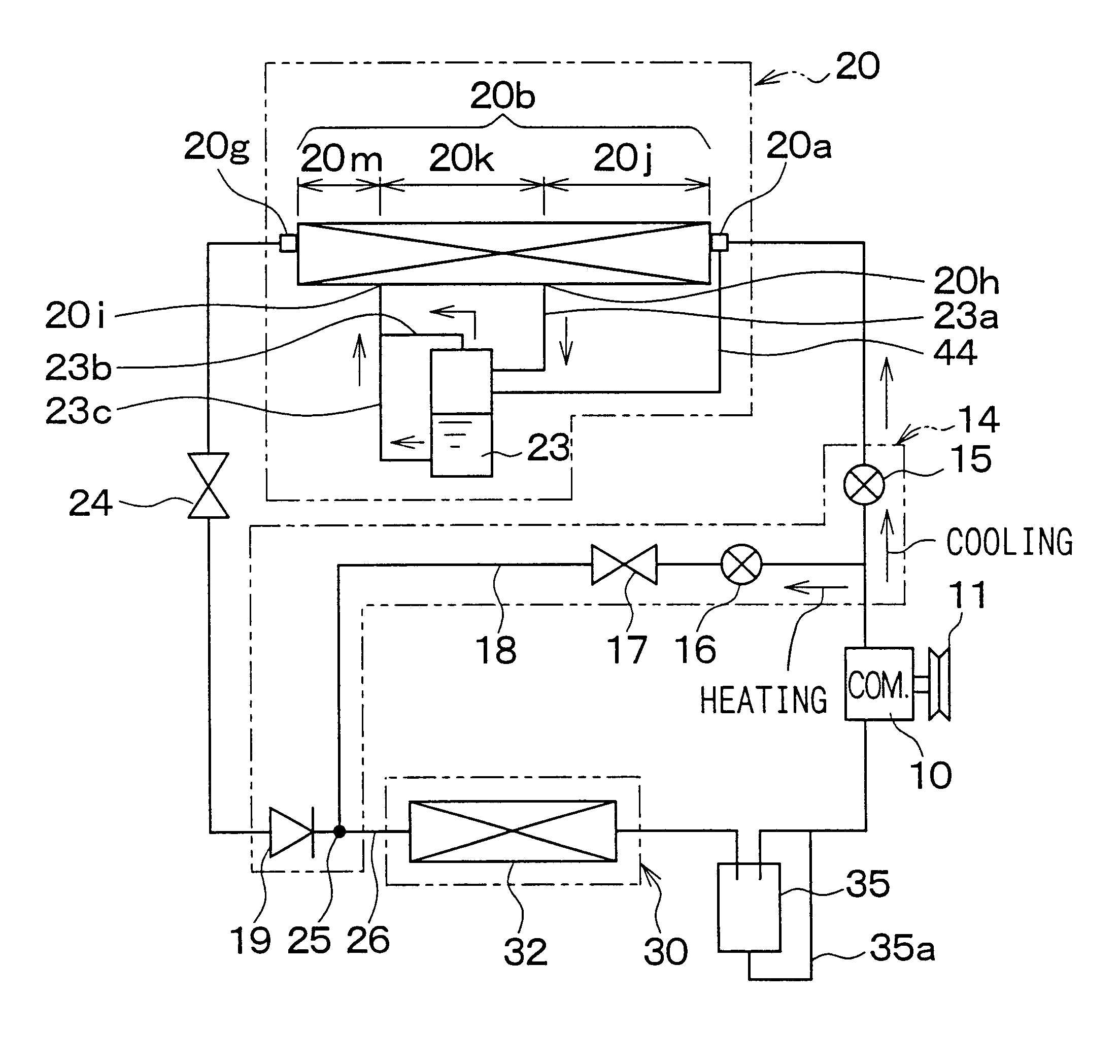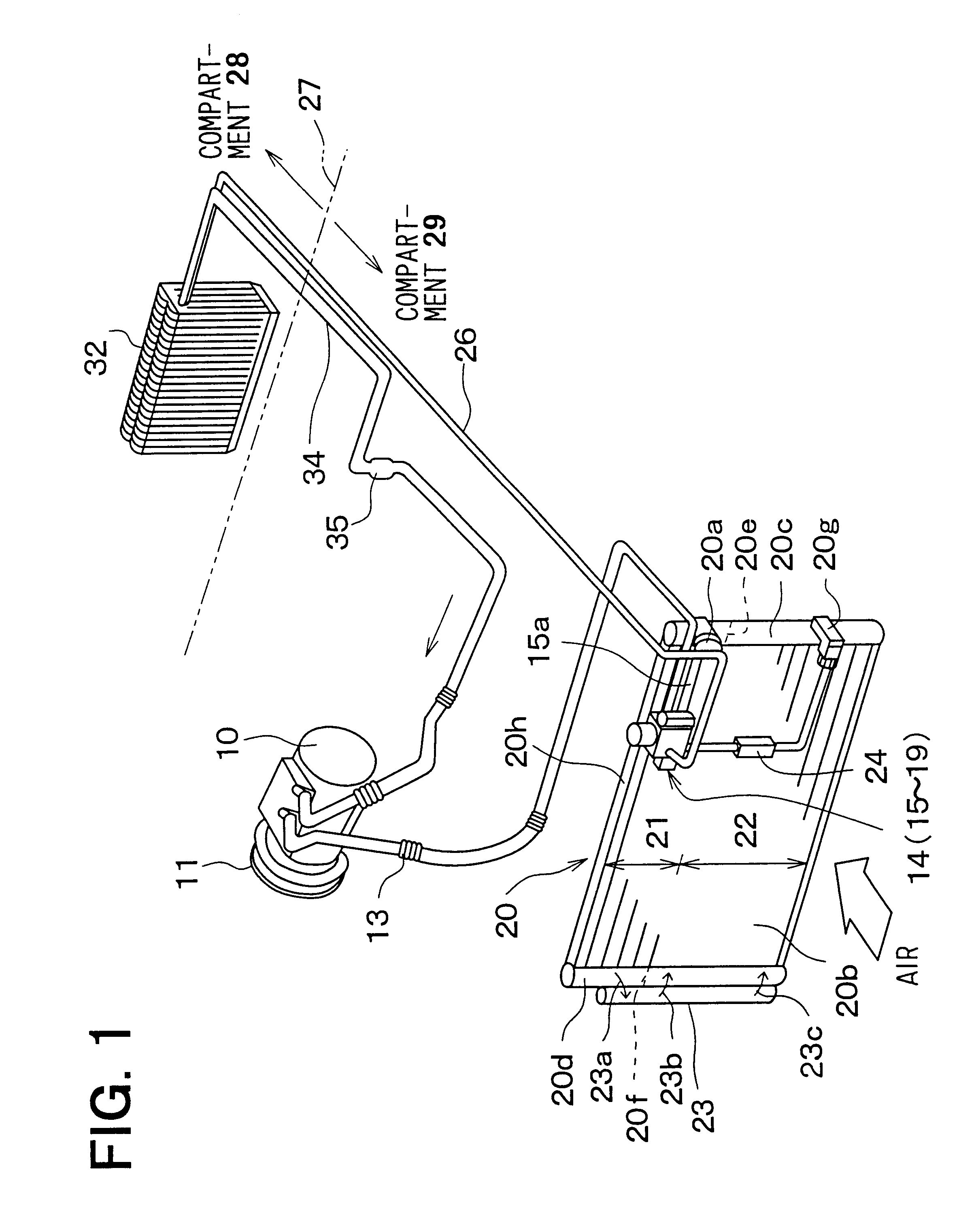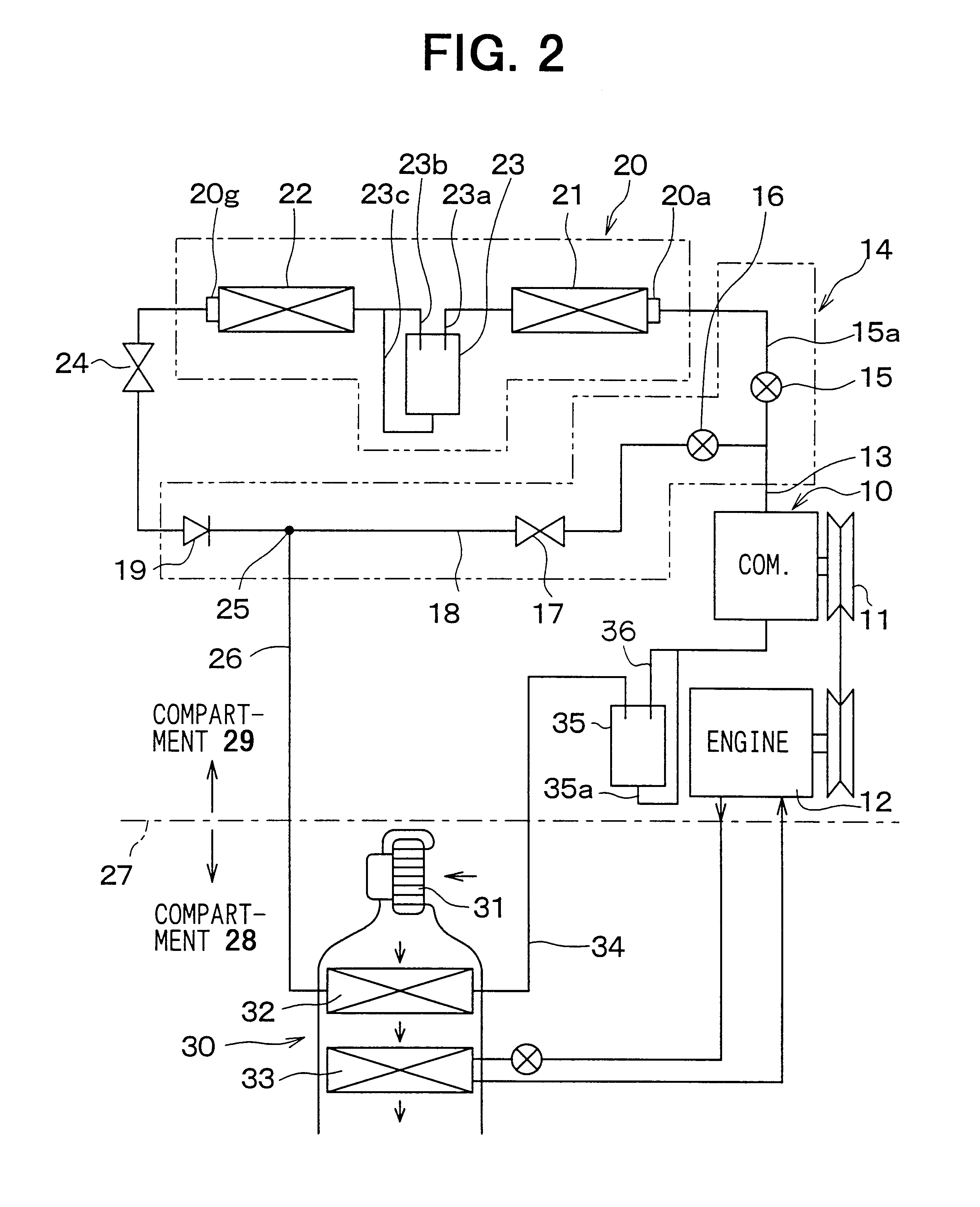Refrigerant cycle system with hot-gas bypass structure
a refrigerant cycle and bypass structure technology, which is applied in the direction of compression machines with several condensers, light and heating apparatus, transportation and packaging, etc., can solve the problems of complex refrigerant pipe structure, difficult to mount the refrigerant cycle system on a small space of a vehicle, and difficult to improve both the cooling capacity and the heating capacity
- Summary
- Abstract
- Description
- Claims
- Application Information
AI Technical Summary
Benefits of technology
Problems solved by technology
Method used
Image
Examples
first embodiment
In the first embodiment, the first heat-exchanging unit 21 is constructed in the upper side part of the heat-exchanging portion 20b, and the second heat-exchanging unit 22 is constructed in the lower side part of the heat-exchanging portion 20b. In FIG. 1, for simply indicating the refrigerant flow, the refrigerant flow is indicated in a simple straight line. However, refrigerant may flow meanderingly in the first and second heat-exchanging units 21, 22 of the condenser 20 to be U-turned in at least one of both the header tanks 20c, 20d.
The condenser 20 according to the first embodiment is formed by integrally assembling the first heat-exchanging unit 21, the second heat-exchanging unit 22 and the gas-liquid separator 23 to assemble these three parts into single-piece integrated structure by an aluminum integral brazing method or the like. However, even if these three parts of the first heat-exchanging unit 21, the second heat-exchanging unit 22 and the gas-liquid separator 23 are c...
fourth embodiment
A second communication path 23b, through which gas refrigerant returns from the upper side within the gas-liquid separator 23 into the main refrigerant passage within the condenser 20 at a downstream side, is provided. In addition, a third communication path 23c is provided so that liquid refrigerant containing oil within the gas-liquid separator 23 returns from the lower side within the gas-liquid separator 23 returns to the main refrigerant passage within the condenser 20 at a downstream side. Specifically, both the second and third communication paths 23b, 23c are joined into a single passage, and is connected to the main refrigerant passage of the condenser 20 at a predetermined connection position 20i positioned at a downstream side than the connection position 29h by a predetermined distance. However, in the fourth embodiment, the second communication path 23b and the third communication path 23c may be connected to the main refrigerant passage of the condenser 20, respectivel...
third embodiment
When the accumulator 35 is disposed within the passenger compartment 28 as described in the third embodiment, the accumulator 35 may be integrated with an inner surface of a case of the air conditioning unit 30 or may be integrated with an outer surface of the case of the air conditioning unit 30.
In the condenser 20 of the first embodiment, the first heat-exchanging unit 21, the second heat-exchanging unit 22 and the gas-liquid separator 23 may be integrally connected using a suitable pipe and the like, after being formed respectively separately. Similarly, in the condenser 20 of the second embodiment, the header tank of the condenser 20 and the gas-liquid separator 23 may be integrally connected using a suitable pipe and the like, after being formed respectively separately.
The decompression unit 24 can be constructed by a movable throttle. That is, if the decompression unit 24 is a variable throttle operated in accordance with a refrigerant state (e.g., temperature, pressure) at an...
PUM
 Login to View More
Login to View More Abstract
Description
Claims
Application Information
 Login to View More
Login to View More - R&D
- Intellectual Property
- Life Sciences
- Materials
- Tech Scout
- Unparalleled Data Quality
- Higher Quality Content
- 60% Fewer Hallucinations
Browse by: Latest US Patents, China's latest patents, Technical Efficacy Thesaurus, Application Domain, Technology Topic, Popular Technical Reports.
© 2025 PatSnap. All rights reserved.Legal|Privacy policy|Modern Slavery Act Transparency Statement|Sitemap|About US| Contact US: help@patsnap.com



